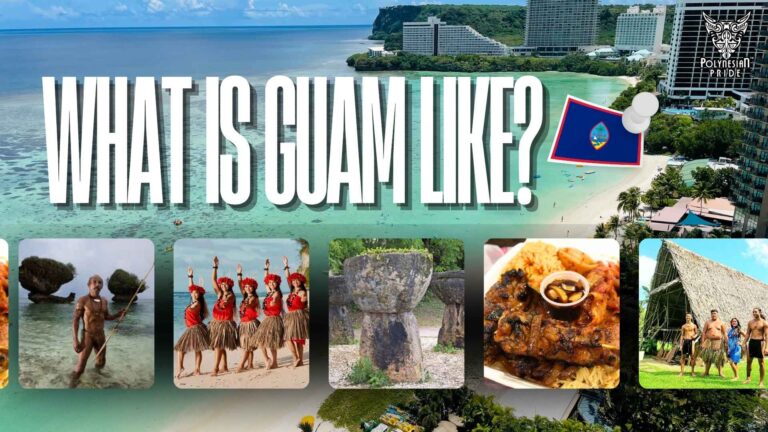Discover New Zealand: A Journey Through its Breathtaking Landscapes, Rich Culture, and Thrilling Adventures

Welcome to New Zealand!
New Zealand is a small island country located in the southwestern Pacific Ocean. Despite its size, it is a land filled with natural wonders, rich culture, and thrilling adventures. Its unique geography and isolation from the rest of the world have contributed to the development of a distinct and vibrant culture that is unlike any other.
In this article, we will take you on a journey through the breathtaking landscapes, rich culture, and exciting adventures that make New Zealand a must-visit destination for travelers. We’ll also provide practical information and tips for visiting this beautiful country, including the best time to visit and cultural etiquette. So pack your bags and get ready to discover the wonders of New Zealand!
Geography of New Zealand
Location

Before delving into the beauty and culture of New Zealand, it’s important to understand its geography. New Zealand is made up of two main islands, the North Island and the South Island, as well as numerous smaller islands. The country is located approximately 1,500 kilometers east of Australia and is known for its rugged terrain, stunning coastlines, and diverse ecosystems.
The North Island is more heavily populated and is home to the country’s largest city, Auckland. It is also known for its active volcanic zones and geothermal areas. The South Island, on the other hand, is more sparsely populated and boasts some of the most dramatic landscapes in the world, including the Southern Alps mountain range.
Climate and Weather

New Zealand has a temperate maritime climate, influenced by the surrounding ocean. The North Island generally experiences milder temperatures, while the South Island can be cooler, particularly in the alpine regions. The country’s climate varies from subtropical in the far north to temperate in the south, with considerable regional variations. Rainfall is evenly distributed throughout the year, though the west coast of the South Island is particularly wet due to its proximity to the Southern Alps. Wondering how to pack for these diverse conditions? Here’s a handy guide on what to wear in New Zealand to help you stay comfortable throughout your trip.
Natural Phenomena
New Zealand is geologically active, sitting on the boundary between the Pacific and Indo-Australian tectonic plates. This results in frequent seismic activity, including earthquakes and volcanic eruptions. The North Island is particularly known for its geothermal features, such as geysers, hot springs, and mud pools, especially around the Rotorua and Taupo areas.
Unique Ecosystems and Biodiversity
New Zealand’s isolation has resulted in a unique array of flora and fauna, many of which are endemic to the country. The country’s forests are home to ancient trees like kauri and rimu, and its varied landscapes support diverse ecosystems ranging from temperate rainforests to alpine environments. It is also known for its distinctive birdlife, including the kiwi, kea, and takahe, as well as its marine life, which includes dolphins, whales, and penguins.
The Natural Beauty of New Zealand
Stunning Landscapes
One of the main reasons people visit New Zealand is for its unparalleled natural beauty. From towering mountains to crystal-clear lakes and white sandy beaches, this country offers a diverse range of landscapes that can be explored in a single day.
North Island: Volcanic Landscapes, Hot Springs, and Lush Forests
The North Island is renowned for its volcanic activity and geothermal wonders, making it a haven for nature enthusiasts. Here are some must-visit destinations:
- Tongariro National Park: A UNESCO World Heritage Site home to three active volcanoes, including Mount Ngauruhoe (Mount Doom from the Lord of the Rings films). The park boasts the world-famous Tongariro Alpine Crossing, offering breathtaking landscapes along its hiking trails.

- Rotorua Geothermal Attractions: Rotorua is renowned for its geothermal features, including geysers, hot springs, and mud pools. Wai-O-Tapu Thermal Wonderland and Te Puia are popular spots to witness these natural wonders.

- Coromandel Peninsula and Hot Water Beach: Known for its beautiful coastline and unique Hot Water Beach, where visitors can dig their own hot pools in the sand.

- Auckland’s West Coast Beaches: Auckland, New Zealand’s largest city, offers stunning west coast beaches like Piha and Bethells Beach, known for their rugged beauty and excellent surf.

South Island: Majestic Mountains, Fjords, and Pristine Beaches
The South Island is famous for its dramatic landscapes and outdoor adventures. Here are some must-visit destinations:
- Fiordland National Park and Milford Sound: Home to stunning fjords, towering cliffs, and cascading waterfalls. A cruise through Milford Sound is a highlight of any New Zealand trip.

- Aoraki/Mount Cook National Park: Featuring New Zealand’s highest peak, Aoraki / Mount Cook, this park offers breathtaking alpine scenery, hiking trails, and glacier experiences.

- Queenstown: Known as the adventure capital of New Zealand, Queenstown is surrounded by the Remarkables mountain range and offers activities such as skiing, bungee jumping, and hiking.

The South Island also boasts other natural wonders such as the Marlborough Sounds, Abel Tasman National Park, and the West Coast glaciers, ensuring there’s something for every nature lover to explore and enjoy in New Zealand.
Iconic Destinations
In addition to its stunning landscapes, New Zealand is home to many iconic destinations that are recognized around the world. One of the most famous is the Franz Josef Glacier, located on the South Island. This massive glacier stretches over 12 kilometers and is one of the few glaciers in the world that is still advancing. Visitors can take a guided hike or helicopter tour to get up close and personal with this natural wonder.

For those looking for a more relaxing experience, the Bay of Islands on the North Island should not be missed. This subtropical region is made up of 144 islands and boasts some of the best sailing, fishing, and diving in the country. It’s also a great place to learn about the history and culture of New Zealand, as it was one of the first areas to be settled by Europeans.
Unique Flora and Fauna
Due to its isolated location, New Zealand is home to a diverse range of plant and animal species that cannot be found anywhere else in the world. In fact, over 80% of New Zealand’s plant and animal life is unique to the country. This includes the iconic kiwi bird, which has become a symbol of New Zealand.
One of the best places to see native flora and fauna is on Stewart Island, located at the southern tip of the South Island. This island is home to many rare and endangered species, including the Stewart Island Weka and the Yellow-Eyed Penguin. Visitors can take guided tours to learn more about these unique creatures and their habitats.
New Zealand’s Rich Cultural Heritage
In addition to its natural beauty, New Zealand also has a rich cultural heritage that is deeply intertwined with its landscapes. The history of the country dates back over 700 years to when the Polynesian ancestors of the Maori people arrived in New Zealand. Today, the Maori culture is an integral part of New Zealand’s identity and is celebrated throughout the country.
Maori New Zealand Culture
The Maori people have a strong connection to the land and believe that all things are interconnected. This belief is reflected in their customs and traditions, which are centered around respecting and protecting the environment.
One of the most well-known aspects of Maori culture is the haka, a traditional dance that is often performed at special events and ceremonies.

Visitors can learn more about Maori culture by visiting one of the many marae (meeting grounds) located throughout the country. These marae serve as a place for community gatherings and cultural events. Many also offer cultural experiences for tourists, such as learning about Maori customs and trying traditional food.
Contemporary Kiwi (New Zealand) Culture
While the Maori culture is a significant part of New Zealand, there is also a vibrant contemporary culture that reflects the country’s diversity and global influences. In recent years, New Zealand has experienced an influx of immigrants from all over the world, adding to the country’s cultural tapestry.
Practical Information for Travelers
One of the most unique aspects of Kiwi culture is the use of slang words and phrases. Some commonly used terms include “sweet as” (meaning great), “chilly bin” (cooler box), and “jandals” (flip flops). These slang words are a reflection of the laid-back and friendly nature of the people in New Zealand.
Best Time to Visit New Zealand
New Zealand has a temperate climate with mild summers and cool winters. The best time to visit depends on your preferences and what you want to do during your trip.

The summer months (December-February) are the most popular time to visit, as the weather is warm and there are many outdoor activities available. However, this is also peak tourist season, so expect crowds and higher prices. If you prefer cooler weather and smaller crowds, consider visiting during the shoulder seasons of spring (September-November) or autumn (March-May).
Winter (June-August) is generally the low season in New Zealand, but it can be a beautiful time to visit if you enjoy skiing and snowboarding. The ski fields on the South Island offer some of the best snow conditions in the Southern Hemisphere.
Travel Tips
New Zealand is known for its laid-back and friendly culture, but there are still some things to keep in mind when traveling in the country.
- Make sure to have travel insurance before your trip. While New Zealand is a relatively safe country, accidents can happen, especially if you plan on participating in adventure activities.
- Consider renting a car to explore the country at your own pace. New Zealand has well-maintained roads and stunning scenic drives, making it the perfect place for a road trip.
- Be aware of the laws and regulations in New Zealand, especially when it comes to driving, alcohol consumption, and camping. Breaking these rules can result in hefty fines.
- Keep an eye out for the wildlife. New Zealand is home to many unique animals, including the endangered kiwi bird, so be mindful of their habitats and safety.
- Remember that New Zealand uses the metric system, so familiarize yourself with conversions before your trip.
Cultural Etiquette and Safety Tips
When visiting any country, it’s essential to be aware of the cultural norms and practices to avoid unintentionally causing offense. Here are a few things to keep in mind when traveling to New Zealand:
- Greet people with a smile and a handshake, as this is the typical way of greeting in New Zealand.
- The Maori culture places great importance on respect, so make sure to ask for permission before taking photos or touching sacred objects.
- Tipping is not expected or required in New Zealand, but you can leave a small tip if you receive exceptional service.
- New Zealand has strict biosecurity laws to protect its unique flora and fauna, so make sure to declare any food, plants, or animals you are bringing into the country.
- In terms of safety, New Zealand is generally considered a safe destination for travelers. However, it’s always a good idea to take precautions such as keeping valuables out of sight and avoiding walking alone at night.
Conclusion
New Zealand is a land of unparalleled beauty, rich culture, and thrilling adventures. From its stunning landscapes to its vibrant culture, there is something for everyone in this small but mighty country. Whether you’re looking to explore the great outdoors, immerse yourself in Maori traditions, or simply relax and take in the laid-back Kiwi lifestyle, It has it all.
So why wait? Start planning your trip to New Zealand today and discover why it has captured the hearts of travelers from all around the world.
Frequently Asked Questions
What are the main highlights of New Zealand’s natural beauty?
New Zealand is known for its diverse landscapes, including volcanic landscapes, hot springs, and lush forests on the North Island, and majestic mountains, fjords, and pristine beaches on the South Island. Iconic destinations include Milford Sound, Tongariro National Park, and Abel Tasman National Park.
How can I experience Maori culture in New Zealand?
To experience Maori culture, you can visit Rotorua, which is a hub for Maori traditions, including geothermal activity and cultural performances. Participating in a traditional Maori hangi feast and watching performances are also great ways to immerse yourself in Maori heritage.
What is the best time to visit New Zealand?
The best time to visit New Zealand depends on the activities you want to do. Summer (December to February) is great for outdoor adventures and beach activities. Autumn (March to May) offers mild weather and beautiful fall foliage. Winter (June to August) is ideal for skiing and snowboarding, while spring (September to November) brings blooming flowers and fewer crowds.
What outdoor activities can I do in New Zealand?
New Zealand offers a wide range of outdoor activities, including hiking and trekking (notably the Great Walks of New Zealand), water sports such as surfing, kayaking, and sailing, and extreme sports like bungee jumping, skydiving, and zip-lining. Wildlife encounters, such as whale watching and visiting bird sanctuaries, are also popular.

I am Leilani Miller – I research focusing on Vanuatu – volcanic landscapes, blue holes, coral reefs & rainforests. I have over five years of experience researching and sharing insights on tourism and environmental activism. Explore and experience without limits through my latest article.
Contact information:
Email: [email protected]
Tel: +1 (808) 555-1528






